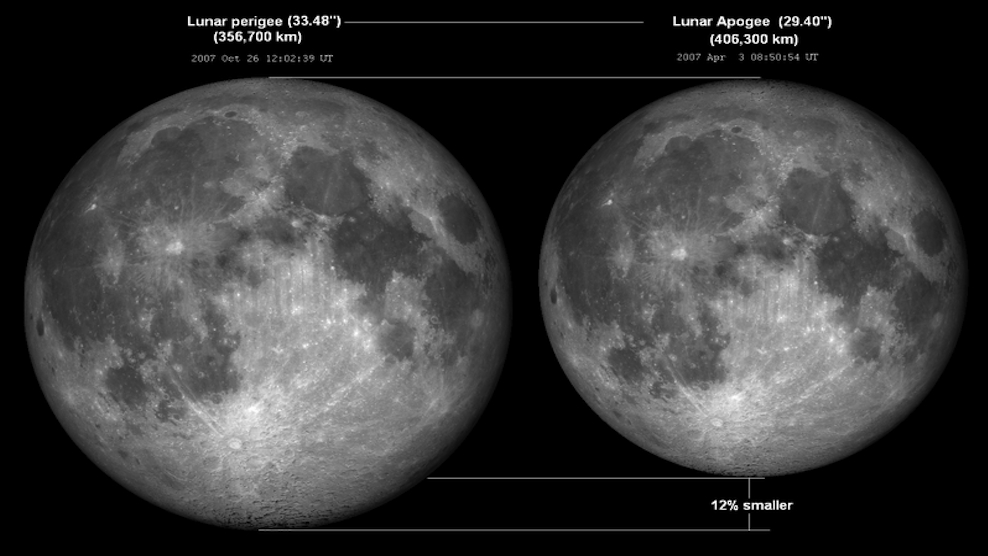Astronomy
Supermoons: not so super after all?
November ‘supermoon’ 7% larger than normal full moon

caption
Size comparison between two 2007 full moons at their closest point to Earth (perigee) and at farthest point from Earth (apogee). The perigee moon is 12 per cent larger than the apogee moon.Stargazers might want to look up Monday when the largest supermoon in at least 70 years lights up the sky. It won’t be this close to Earth again until November 2034, according to NASA.
But don’t expect the moon to jump out of the sky.
“It’s not like it is twice the size,” said Dave Lane, director of the Saint Mary’s University observatory.
November’s full moon is classified as a supermoon because it is the closest the moon will be to Earth all year, about 356,500 km.
This supermoon is seven per cent larger than a normal full moon. To the naked eye, it won’t look much different.
“If I told you I could jump seven per cent higher than the average man, would you call me Superman?” Dave Chapman, a vice-president with the Royal Astronomical Society of Canada, Halifax Centre, said with a laugh.
“Maybe you have to go back to 1948 to find (a full moon) that’s closer,” he added, “but we’re only talking a few kilometres or tens of kilometres.”

caption
A size comparison between two 2007 full moons at their closest (perigee) and farthest (apogee) points from Earth. The perigee moon is 12 per cent larger than the apogee moon.The closest point to Earth on the moon’s elliptical orbit is called perigee, and most astronomers call close full moons perigee moons, not supermoons. Perigee is around 360,000 km to Earth: the same distance as driving from Yarmouth to Sydney, N.S,. 513 times. Perigee moons are common, often occurring multiple times a year. There was one in October and there will be one in December too.
This supermoon is less than one per cent larger than October’s full moon.
‘Pretty extreme tides’
A supermoon still has an influence on the Earth. Nova Scotia will experience higher tides, said Lane, “which is probably a larger effect of close moons than you being able to see them.”
Lane said to expect “pretty extreme tides” in the Bay of Fundy, but Nova Scotia probably won’t experience any flooding.
The moon will start looking larger on Sunday night. The supermoon comes closest to Earth at 9:20 a.m. AT Monday, and gets farther away as the day goes on, so the moon will actually be smaller at night.
Halifax stargazers can watch the moon rise around 5:20 p.m. on Monday, about 30 minutes after sunset. It’s best to watch from a high point in the city, like Citadel Hill, looking across the harbour to Dartmouth.
Chapman encourages people to head out Monday and look up.
“It’s important for people to keep connected to the sky,” he said. “We’re living here on the Earth and we get our heads down in screens … and very few of us take the time to look up.”

S
Stan Taylor
S
Sixian Zuo